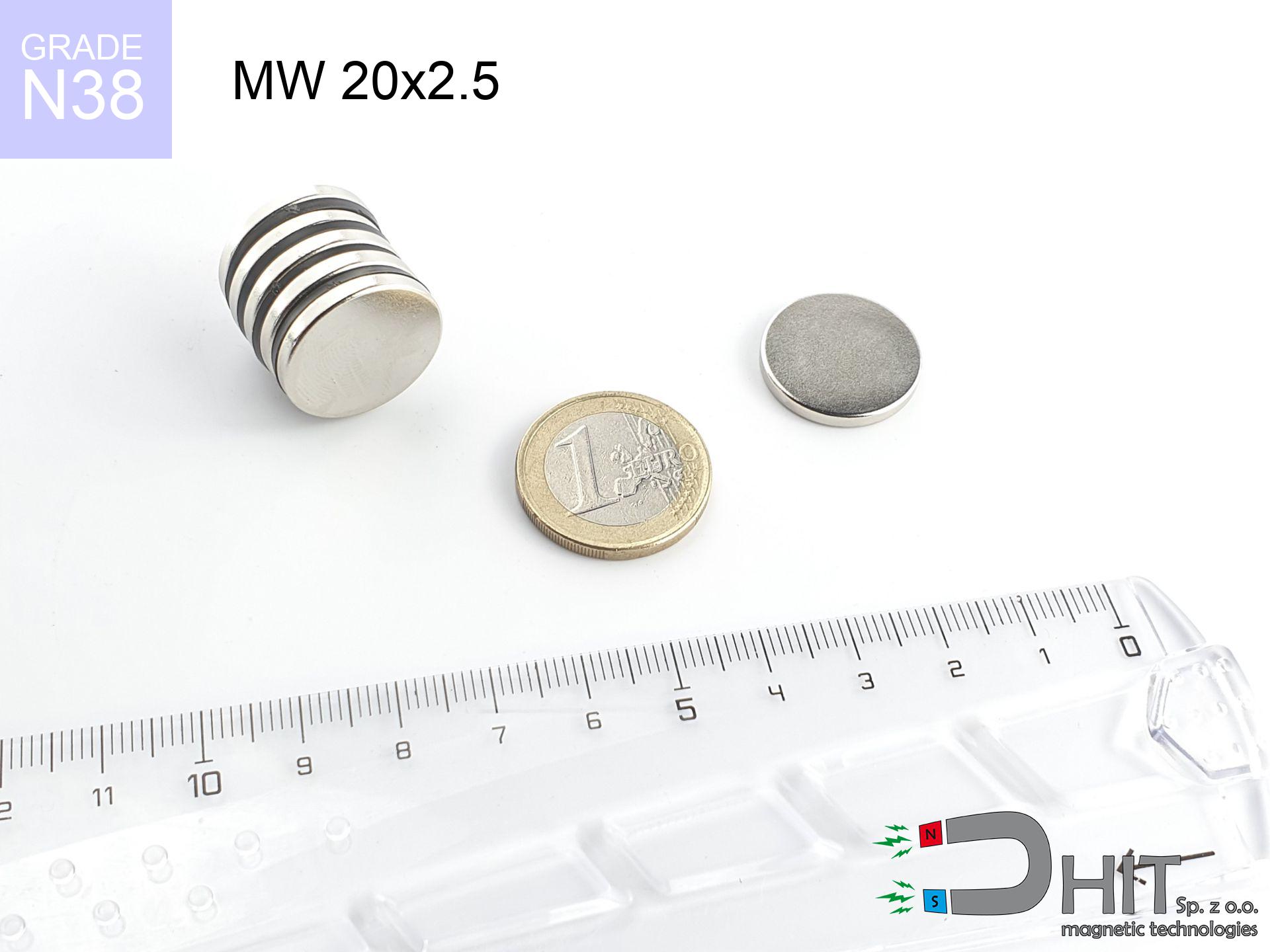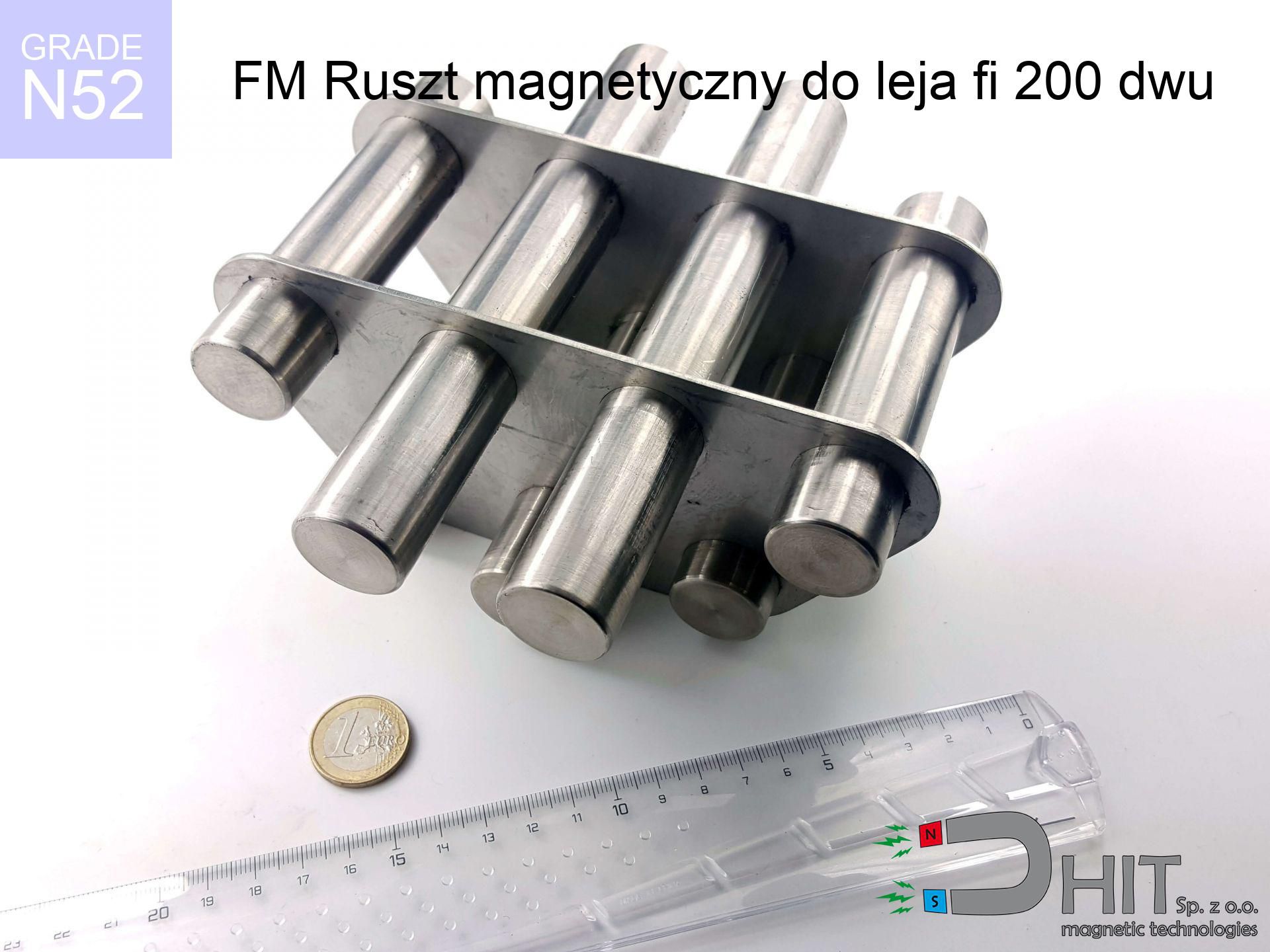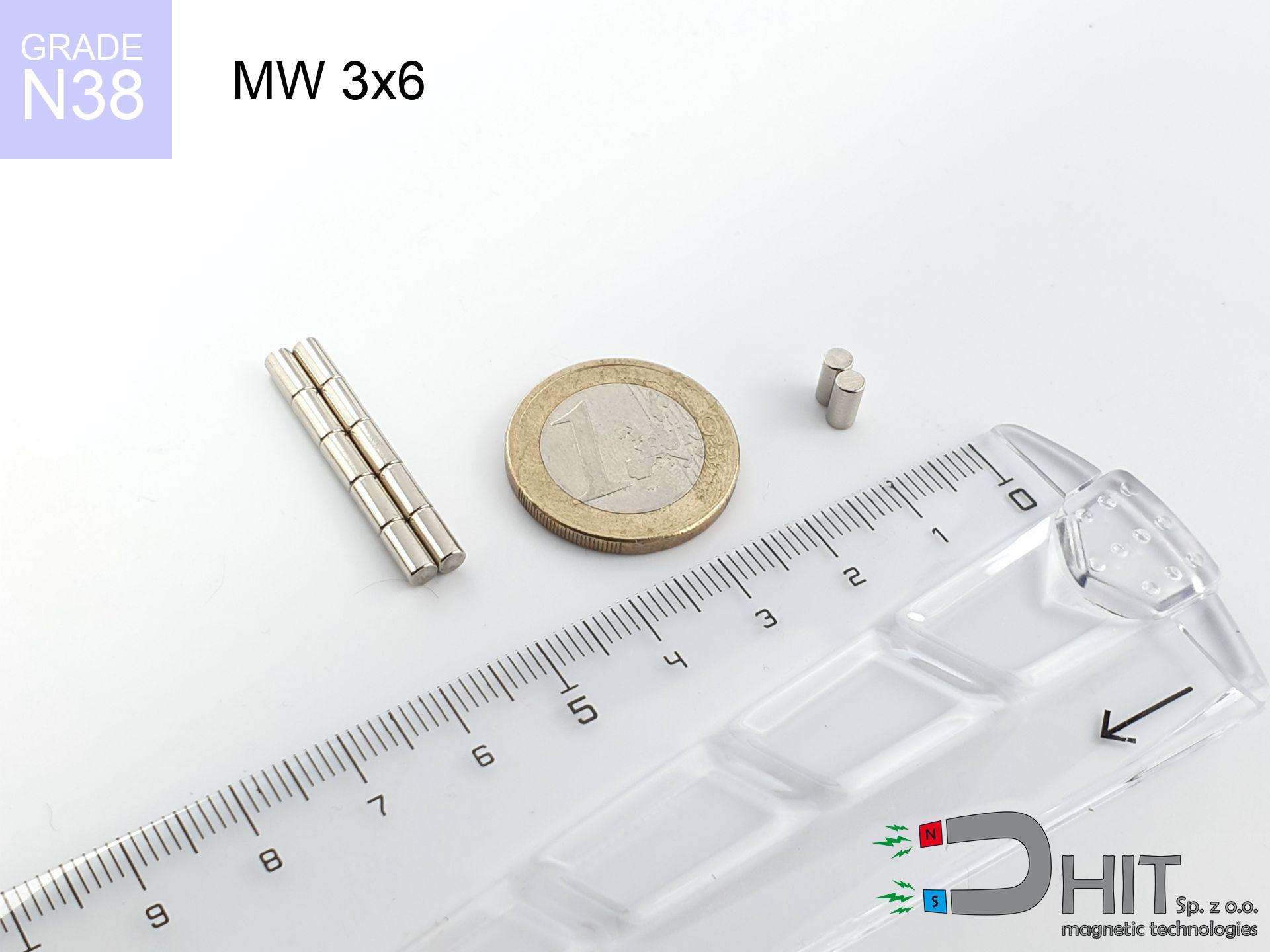SM 18x275 [2xM5] / N42 - magnetic separator
magnetic separator
Catalog no 130276
GTIN/EAN: 5906301812784
Diameter Ø
18 mm [±1 mm]
Height
275 mm [±1 mm]
Weight
0.01 g
Magnetic Flux
~ 5 400 Gauss [±5%]
608.85 ZŁ with VAT / pcs + price for transport
495.00 ZŁ net + 23% VAT / pcs
bulk discounts:
Need more?
Give us a call
+48 888 99 98 98
alternatively contact us using
contact form
through our site.
Lifting power as well as appearance of a neodymium magnet can be estimated using our
modular calculator.
Order by 14:00 and we’ll ship today!
Detailed specification - SM 18x275 [2xM5] / N42 - magnetic separator
Specification / characteristics - SM 18x275 [2xM5] / N42 - magnetic separator
| properties | values |
|---|---|
| Cat. no. | 130276 |
| GTIN/EAN | 5906301812784 |
| Production/Distribution | Dhit sp. z o.o. |
| Country of origin | Poland / China / Germany |
| Customs code | 85059029 |
| Diameter Ø | 18 mm [±1 mm] |
| Height | 275 mm [±1 mm] |
| Weight | 0.01 g |
| Material Type | Stainless steel AISI 304 / A2 |
| Magnetic Flux | ~ 5 400 Gauss [±5%] |
| Size/Mount Quantity | 2xM5 |
| Polarity | circumferential - 12 poles |
| Casing Tube Thickness | 1 mm |
| Manufacturing Tolerance | ±1 mm |
Magnetic properties of material N42
| properties | values | units |
|---|---|---|
| remenance Br [min. - max.] ? | 12.9-13.2 | kGs |
| remenance Br [min. - max.] ? | 1290-1320 | mT |
| coercivity bHc ? | 10.8-12.0 | kOe |
| coercivity bHc ? | 860-955 | kA/m |
| actual internal force iHc | ≥ 12 | kOe |
| actual internal force iHc | ≥ 955 | kA/m |
| energy density [min. - max.] ? | 40-42 | BH max MGOe |
| energy density [min. - max.] ? | 318-334 | BH max KJ/m |
| max. temperature ? | ≤ 80 | °C |
Physical properties of sintered neodymium magnets Nd2Fe14B at 20°C
| properties | values | units |
|---|---|---|
| Vickers hardness | ≥550 | Hv |
| Density | ≥7.4 | g/cm3 |
| Curie Temperature TC | 312 - 380 | °C |
| Curie Temperature TF | 593 - 716 | °F |
| Specific resistance | 150 | μΩ⋅cm |
| Bending strength | 250 | MPa |
| Compressive strength | 1000~1100 | MPa |
| Thermal expansion parallel (∥) to orientation (M) | (3-4) x 10-6 | °C-1 |
| Thermal expansion perpendicular (⊥) to orientation (M) | -(1-3) x 10-6 | °C-1 |
| Young's modulus | 1.7 x 104 | kg/mm² |
Table 1: Rod construction
SM 18x275 [2xM5] / N42
| Parameter | Value | Description / Unit |
|---|---|---|
| Diameter (Ø) | 18 | mm |
| Total length | 275 | mm (L) |
| Active length | 239 | mm |
| Section count | 10 | modules |
| Dead zone | 36 | mm (2x 18mm starter) |
| Weight (est.) | ~532 | g |
| Active area | 135 | cm² (Area) |
| Housing material | AISI 304 | 1.4301 (Inox) |
| Surface finish | Ra < 0.8 µm | Polished |
| Temp. class | 80°C | Standard (N) |
| Force loss (at max °C) | -12.8% | Reversible loss (physics) |
| Force (calculated) | 3.8 | kg (theor.) |
| Induction (surface) | ~5 400 | Gauss (Max) |
Chart 2: Field profile (10 sections)
Chart 3: Temperature performance
Chemical composition
| iron (Fe) | 64% – 68% |
| neodymium (Nd) | 29% – 32% |
| boron (B) | 1.1% – 1.2% |
| dysprosium (Dy) | 0.5% – 2.0% |
| coating (Ni-Cu-Ni) | < 0.05% |
Sustainability
| recyclability (EoL) | 100% |
| recycled raw materials | ~10% (pre-cons) |
| carbon footprint | low / zredukowany |
| waste code (EWC) | 16 02 16 |
Other deals
Strengths as well as weaknesses of Nd2Fe14B magnets.
Pros
- Their magnetic field remains stable, and after approximately ten years it drops only by ~1% (theoretically),
- Neodymium magnets remain remarkably resistant to demagnetization caused by external field sources,
- The use of an metallic finish of noble metals (nickel, gold, silver) causes the element to have aesthetics,
- They feature high magnetic induction at the operating surface, which improves attraction properties,
- Made from properly selected components, these magnets show impressive resistance to high heat, enabling them to function (depending on their shape) at temperatures up to 230°C and above...
- Thanks to freedom in shaping and the ability to customize to specific needs,
- Significant place in modern technologies – they are commonly used in computer drives, motor assemblies, advanced medical instruments, also industrial machines.
- Compactness – despite small sizes they generate large force, making them ideal for precision applications
Weaknesses
- Susceptibility to cracking is one of their disadvantages. Upon strong impact they can fracture. We advise keeping them in a strong case, which not only protects them against impacts but also increases their durability
- Neodymium magnets demagnetize when exposed to high temperatures. After reaching 80°C, many of them experience permanent weakening of strength (a factor is the shape as well as dimensions of the magnet). We offer magnets specially adapted to work at temperatures up to 230°C marked [AH], which are extremely resistant to heat
- They rust in a humid environment - during use outdoors we recommend using waterproof magnets e.g. in rubber, plastic
- Due to limitations in creating threads and complex forms in magnets, we propose using a housing - magnetic mount.
- Potential hazard related to microscopic parts of magnets can be dangerous, when accidentally swallowed, which becomes key in the context of child health protection. It is also worth noting that small components of these devices can complicate diagnosis medical when they are in the body.
- With large orders the cost of neodymium magnets can be a barrier,
Pull force analysis
Magnetic strength at its maximum – what affects it?
- using a plate made of low-carbon steel, serving as a magnetic yoke
- possessing a thickness of minimum 10 mm to avoid saturation
- characterized by even structure
- under conditions of gap-free contact (surface-to-surface)
- under vertical force vector (90-degree angle)
- at standard ambient temperature
Key elements affecting lifting force
- Distance (betwixt the magnet and the plate), because even a tiny distance (e.g. 0.5 mm) results in a drastic drop in force by up to 50% (this also applies to paint, corrosion or dirt).
- Load vector – maximum parameter is available only during perpendicular pulling. The shear force of the magnet along the plate is standardly several times lower (approx. 1/5 of the lifting capacity).
- Wall thickness – the thinner the sheet, the weaker the hold. Part of the magnetic field penetrates through instead of generating force.
- Material composition – not every steel attracts identically. High carbon content weaken the interaction with the magnet.
- Surface condition – smooth surfaces guarantee perfect abutment, which improves force. Rough surfaces weaken the grip.
- Thermal environment – heating the magnet results in weakening of induction. Check the maximum operating temperature for a given model.
Lifting capacity testing was performed on a smooth plate of suitable thickness, under a perpendicular pulling force, whereas under shearing force the holding force is lower. In addition, even a minimal clearance between the magnet’s surface and the plate reduces the load capacity.
Warnings
Thermal limits
Standard neodymium magnets (grade N) undergo demagnetization when the temperature exceeds 80°C. The loss of strength is permanent.
Danger to the youngest
These products are not suitable for play. Eating several magnets may result in them attracting across intestines, which poses a direct threat to life and requires urgent medical intervention.
Magnetic interference
A strong magnetic field disrupts the functioning of magnetometers in phones and navigation systems. Keep magnets close to a smartphone to avoid breaking the sensors.
Magnet fragility
Neodymium magnets are sintered ceramics, meaning they are fragile like glass. Impact of two magnets leads to them cracking into shards.
Safe distance
Intense magnetic fields can destroy records on credit cards, HDDs, and other magnetic media. Maintain a gap of min. 10 cm.
Do not drill into magnets
Powder created during cutting of magnets is combustible. Avoid drilling into magnets unless you are an expert.
Bodily injuries
Protect your hands. Two large magnets will join immediately with a force of massive weight, crushing everything in their path. Exercise extreme caution!
Warning for heart patients
People with a pacemaker have to keep an safe separation from magnets. The magnetic field can disrupt the functioning of the life-saving device.
Powerful field
Be careful. Rare earth magnets act from a long distance and snap with huge force, often faster than you can move away.
Allergy Warning
Warning for allergy sufferers: The Ni-Cu-Ni coating contains nickel. If redness happens, cease working with magnets and use protective gear.

![Separation magnetic rod SM 18x275 [2xM5] / N42 Separation magnetic rod SM 18x275 [2xM5] / N42](https://cdn3.dhit.pl/graphics/banners/magnet.webp)
![SM 18x275 [2xM5] / N42 - magnetic separator](https://cdn3.dhit.pl/graphics/products/sm-18x275-2xm5-zep.jpg)





